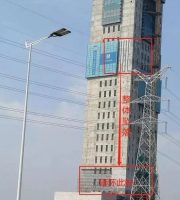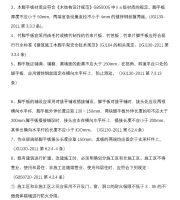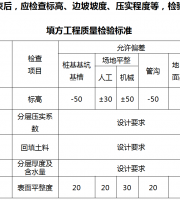For example, when the concrete is poured in layers, the post pouring concrete fails to be poured before the initial setting of the pre pouring concrete due to power failure, rain and other reasons, resulting in horizontal cracks between the layers.
7、 The joint of segmental pouring is not handled well.
Due to the insufficient settlement of the concrete before hardening, the settlement after hardening is too large.
During the construction of pumped concrete, in order to facilitate the construction, add water without authorization to improve the fluidity of concrete, or increase the water cement ratio for other reasons, resulting in the increase of shrinkage when the concrete hardens, the appearance of reticular or irregular cracks of different lengths in the structure, and the reduction of strength and durability.
The mandatory specification requires that the concrete curing should be covered and watered.
9、 The curing method is incorrect.
Solid Lifting Socket Cross Pin
The formwork is insufficiently watered and excessively dry before pouring.
In summer and winter, due to the large temperature difference between day and night, improper maintenance is also prone to temperature difference cracks.
When pouring concrete, the formwork is deformed due to the effect of lateral pressure, resulting in cracks consistent with the formwork deformation.
The concrete mixing and transportation time is too long, which will lead to excessive evaporation of water, resulting in excessive loss of concrete slump and small concrete fluidity, resulting in failure to pump.
6、 If it is not vibrated correctly, the vibration is not dense and uneven, and honeycomb, pitted surface and cavity appear, which is the origin point of reinforcement corrosion or other load cracks.
Now most of them are not covered, and watering can not ensure regular wetting, so that the initial surface of the concrete loses water too quickly.
2、 The concrete mixing and transportation time is too long.
When segmental cast-in-place is adopted, the contact surface of the first cast concrete is not chiseled and cleaned well, the bonding force between the new and old concrete is small, or the curing of the later cast concrete is not in place, resulting in concrete shrinkage and cracks.
If the environmental humidity is low, the air is dry, the temperature is high, and the wind speed is high, the water evaporation rate of the concrete is very fast, and the concrete is prone to shrinkage cracking.
It is easy to have cracks on the reinforcement, at the junction of wall and slab, beam and column after pouring for several hours, that is, settlement shrinkage cracks.
3、 The formwork operation is not standardized, and the formwork stiffness is insufficient.
During construction, the formwork is removed too early and the concrete strength is insufficient, which makes the members produce cracks under the action of self weight or construction load.
The carbon dioxide in the air reacts with the calcium hydroxide in the cement slurry to produce calcium carbonate, which leads to the obvious shrinkage of the concrete at the later stage of hardening, that is, carbonation shrinkage and cracking.
When the concrete is layered or poured in sections, the joint is not handled well, and cracks are easy to appear between the new and old concrete and the construction joint.
4、 Unreasonable management of construction technology and confusion; unrestricted stacking of construction equipment and materials during construction; Do not understand the stress characteristics of prefabricated structures, and turn over, lift, transport and install at will; Do not construct according to the design drawings, change the structural construction sequence and change the structural stress mode without authorization; These behaviors will produce cracks.
Due to the lack of necessary hydration water, the cement has a sharp volume shrinkage.
After pouring, due to the large amount of water absorption of the formwork, the concrete shrinks and plastic shrinkage cracks occur.
After the water evaporates, it is easy to form plastic shrinkage cracks.
The strength is uneven, and it has greater dry shrinkage than the lower layer concrete.
The formwork support has insufficient compaction or stiffness, and the support sinks unevenly after pouring concrete, resulting in cracks in the concrete.
At this time, the early strength of the concrete is low, and it fails to resist this kind of shrinkage stress and cracks.
8、 Excessive troweling and calendering after pouring concrete will cause more fine aggregate to float to the concrete surface and form a cement slurry layer with large water content.
5、 The construction speed is too fast, the pouring is too fast, and the concrete fluidity is low.
The vibration time is too short, and the vibration is not dense, resulting in insufficient or uneven concrete strength; If the time is too long, it will cause delamination, the coarse aggregate will sink into the bottom layer, and the fine aggregate will remain in the upper layer.
The bound upper reinforcement is trampled randomly, and the reinforcement is bent and trampled down, so that the protective layer of the stressed reinforcement bearing the negative bending moment is thickened, resulting in the reduction of the effective height of the member, the reduction of the bearing capacity, and the formation of cracks perpendicular to the stressed reinforcement.
10、 The concrete is frozen in the early stage, and the necessary thermal insulation measures are not taken in winter construction, so that the concrete is frozen in the early stage, and there will be cracks on the surface, or local spalling, or hollowing after demoulding.



